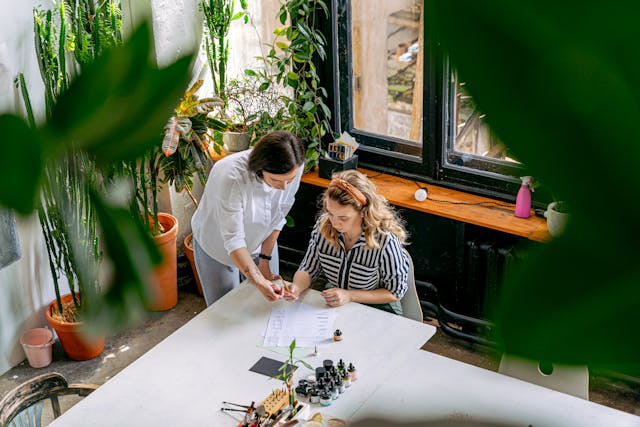In today’s evolving work landscape, the traditional office setting has given way to remote and hybrid work schedules, transforming the way we approach our daily routines and work environments. With homes now doubling as offices, the importance of designing a workspace that enhances productivity, creativity, and overall well-being has never been more crucial.
Creating an inspiring workspace begins with understanding how you will use the space. Are you a creative thinker who thrives on inspiration boards and sketchpads, or do you need a calm, distraction-free zone for deep focus? Tailoring different zones within your workspace to suit your specific work style is key to maximizing productivity and creativity.
Lighting plays a significant role in any workplace, yet it is often overlooked. Natural light has been proven to boost energy levels and regulate circadian rhythms, promoting long-term well-being. Placing your desk near a window and utilizing sheer curtains or blinds to diffuse harsh light can amplify the effects of natural light. Additionally, human-centric lighting, using LED systems to mimic the natural progression of daylight, can help regulate your rhythm even during late-night work sessions.
The psychological effects of color on mood and productivity are well-documented. Choosing a color palette that suits your work style is essential. Soft neutrals like warm beige and pale grey can create a calming backdrop, while bold accents like terracotta and deep navy can boost creativity. Incorporating your favorite colors through elements like wall art, accent walls, and textiles can enhance your mood and productivity throughout the day.
Ergonomics is another crucial aspect of creating a productive workspace. Ensuring comfortable chair and desk height, proper monitor positioning, and posture support are essential for maintaining good posture and overall health. Today’s ergonomic design pieces combine functionality with aesthetics, providing furniture that supports your body while inspiring your eye.
Engaging all five senses is key to creating a sensory-friendly workplace that promotes comfort and focus. Consider incorporating calming scents, soft textures like rugs and curtains for sound absorption, and tactile elements like smooth wood and velvet cushions to enhance the overall environment.
Ultimately, designing an inspiring workspace is about creating a fusion of beauty, function, and emotion. Every detail, from lighting to color choices, has the power to impact your daily experience. By investing time and effort into designing a workspace that supports you, you are investing in your productivity, comfort, and long-term success.


